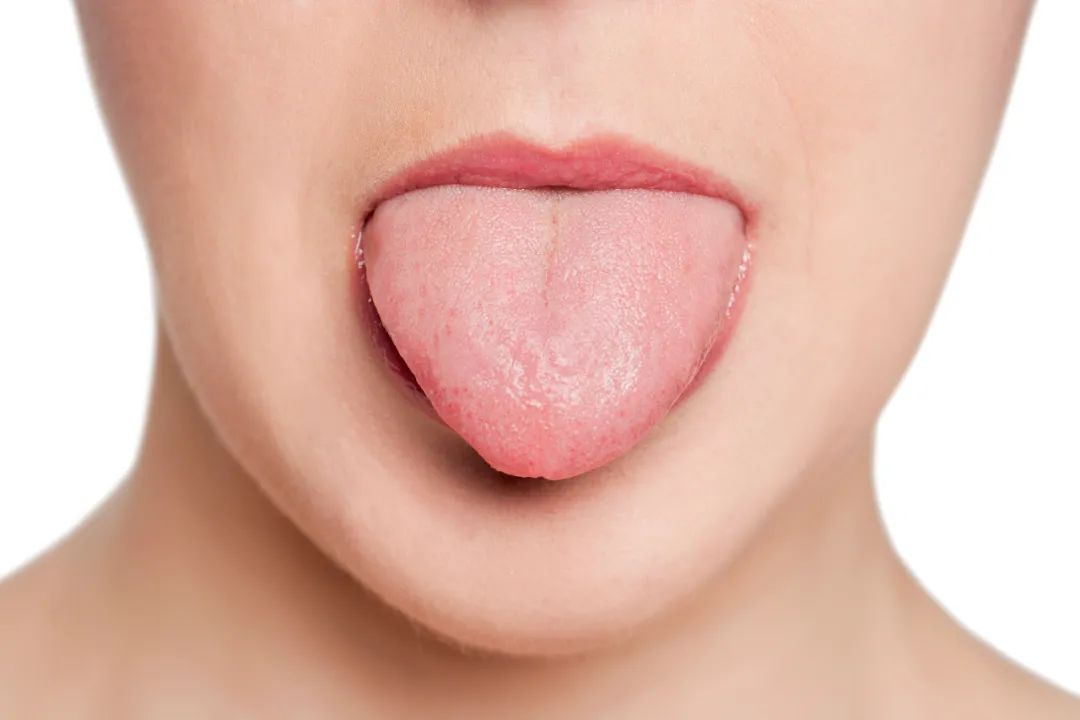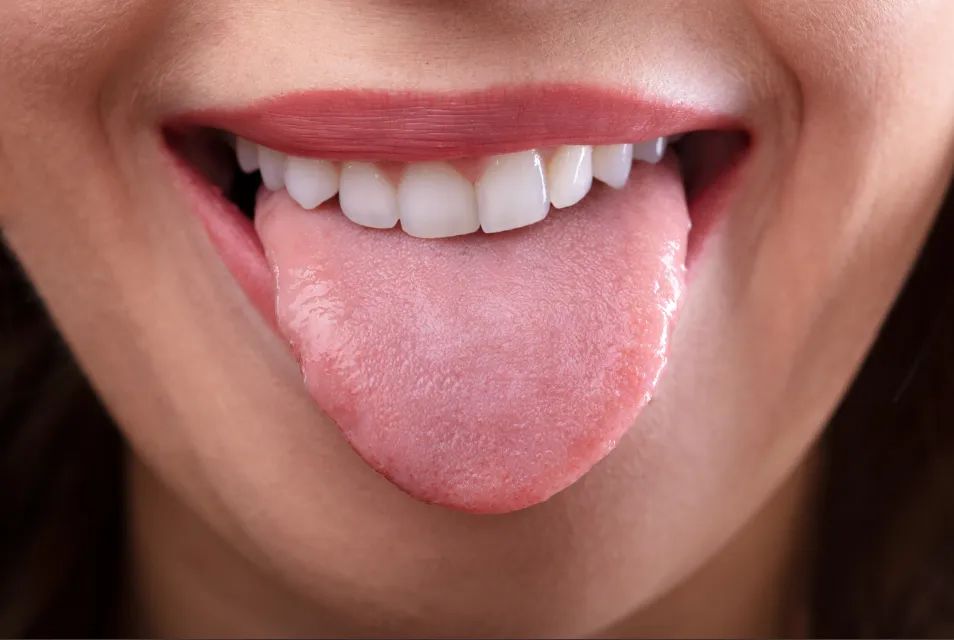
The tongue not only allows you to taste various flavors but also serves as a mirror of health.By observing subtle changes in the characteristics of the tongue, doctors can gain insights into the health status of the body.
10 Types of Tongue Appearance That May Indicate Illness
Traditional Chinese Medicine (TCM) believes that the tongue is closely connected to the five organs through meridians, and changes in the organs often reflect on the tongue. Changes in tongue appearance can quickly and intuitively reflect the balance of Qi and blood, Yin and Yang, and the progression or retreat of pathogenic factors.If there are changes in the color, shape, or coating of the tongue, it may indicate health issues or even diseases.

Image source from copyright stock, please do not reprint.
Tongue Color
▶Pale Tongue: Commonly seen in patients with deficiency of both Qi and blood, or insufficient Yang Qi, often accompanied by a thin or absent coating. Insufficient Yang Qi causes the tongue body to appear pale; patients with anemia may also present with a pale tongue.▶Red Tongue: Generally indicates excess heat in the body or Yin deficiency leading to heat. If there are red spots or prickles on the tongue surface, it may represent excessive heart fire, gastrointestinal heat, or liver and gallbladder fire.Clinically, patients with acute stroke often have an abnormally red tongue; Helicobacter pylori infection may present with a slightly red tongue with white spots.▶Purple Tongue: Commonly seen in individuals with poor blood circulation, such as those with cold syndrome, heat syndrome, or blood stasis syndrome.A dark purple tongue may be caused by hyperlipidemia, cor pulmonale, etc.; cancer patients may also present with a purple tongue that has a thick greasy feel; a bluish-purple tongue suggests vascular, gastrointestinal, or asthma issues.▶Yellow Tongue: Generally caused by food coloring, such as long-term smoking, drinking tea, and consuming dark-colored foods. Image source from copyright stock, please do not reprint.The tongue of individuals with fever, liver and biliary diseases, gastrointestinal issues, and diabetes may also appear yellow.
Image source from copyright stock, please do not reprint.The tongue of individuals with fever, liver and biliary diseases, gastrointestinal issues, and diabetes may also appear yellow.
Tongue Coating
▶Thick Coating: May indicate a progression from mild to severe illness or gastrointestinal stagnation.If the coating is thick and yellow, it often indicates internal heat or food stagnation; a thick white coating usually indicates excessive damp phlegm. In cases of cold or systemic infections, infants, the elderly, and immunocompromised individuals may also present with thick coating due to fungal infections.▶Dry Coating: A dry tongue coating with no moisture is commonly seen in patients with high fever, Yin fluid deficiency, or vomiting and diarrhea causing fluid loss.▶Greasy Coating: Indicates dampness and turbidity accumulation, with Yang Qi being restrained. A yellow greasy coating often indicates damp-heat; a white greasy coating usually indicates cold dampness.
Tongue Shape
▶Swollen Tongue: A tongue that is swollen and has tooth marks on the edges is often caused by spleen deficiency and excessive dampness or Yang Qi deficiency. If the coating is yellow and greasy, it may be accompanied by damp-heat.▶Thin Red Tongue: A thin and red tongue often indicates Yin deficiency with excessive heat or nutritional deficiency.▶Cracked Tongue: The appearance of cracks on the tongue surface is often due to deficiency of essence and blood or excessive heat damaging fluids. Sudden onset of cracks may indicate superficial gastritis or malnutrition; if symptoms persist for more than two weeks, medical attention is advised.
What Does a Healthy Tongue Look Like?
According to doctors, a healthy tongue should be: light red in color, moist in texture, flexible in movement, with a thin white and even coating, and moderate in dryness and wetness.

Image source from copyright stock, please do not reprint.It is important to note that changes in tongue appearance do not exist in isolation but are related to the patient’s overall symptoms, pulse condition, etc.Tongue diagnosis, as an auxiliary diagnostic method, relies on the experience and skills of the physician. Therefore, interpreting tongue appearance for diagnosis is a specialized skill, and one should not hastily self-diagnose based on tongue appearance. If you notice any abnormalities in your tongue, be sure to seek medical attention for professional evaluation.
The tongue nerves originate from the brain and connect to the tongue; regularly exercising the tongue is beneficial for health. You can practice the following tongue exercises:
1. In the morning, in front of a mirror, extend and retract the tongue 10 times, then move the tongue left and right outside the mouth 5 times;
2. Sit with fingers spread on your knees, slightly lean forward. Inhale through the nose, then open your mouth wide, extend your tongue, and exhale while widening your eyes and looking straight ahead, repeating 3-5 times;
3. Open your mouth, slowly extend your tongue, hold for 2-3 seconds, and repeat 5 times;
4. Tilt your head back, extend your chin, open your mouth wide, extend your tongue, and hold for 2-3 seconds, repeating 5 times.
-
Source: Life Times
WeChat revision
Readers often miss notifications
Star 🌟 “Healthy Hangzhou”
To receive every new article promptly


PreviousIssuesReviewThese 5 behaviors you think are resting actually consume a lot of energy
This fruit is rich in Vitamin C, perfect for summer infusion
5 habits that the stomach fears, many people may do every day
If you want to write about doctors, you can’t just write about doctors


